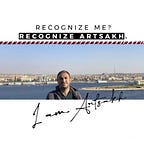Bicar the humanized art without borders
Hussein Amin Ibrahim Bicar, Aka Bicar (2 January 1913–16 November 2002) was one of the most notable artists of the 20th century. Bicar was the first Egyptian artist to illustrate Arabic children’s books. He had played a major role in establishing and promoting this field.
His contribution went beyond illustration and includes art criticism and narrative poetry. Moreover, he was credited for initiating a style of journalistic art that elevated newspaper illustration to a level close to that of Fine Art.
Childhood
He seemed to be an artist from his childhood. He played the lute at the age of eight, and by nine, he was in demand as a music teacher for society ladies who, due to cultural restrictions, could not use adult male teachers. At 15, his mother, who always encouraged his talents, moved him to Cairo when he entered the Higher School of Fine Arts.
One of his teachers, Friedman Cluezel from Sweden, recognized Bicar to be “gifted as a portrait artist”. Cluezel asked him to draw his portrait, which was one of the first Bicar portraits.
Teaching career
After graduating from the School of Fine Arts in 1934, he spent more than 60 years of his life teaching art at schools and universities. In his senior year, he studied with Ahmad Sabri, the best portraitist in Egypt, who became his mentor and lifelong friend.
In 1939, Bicar was selected as a member of a team of teachers who went to Morocco to teach, responding to the invitation of the Moroccan government. In 1943, after returning to Egypt, he was appointed assistant to his former professor, Ahmed Sabri.
Bicar the illustrator
During his work as an assistant, Sabri asked him to prepare drawings for the first illustrated book published in Egypt entitled “The stream of days of Taha Hussein”. This book was the spark as, in 1952, Bicar produced and illustrated Sindbad, the first children’s magazine of its kind in Egypt.
The passion for Egyptian heritage
Bicar’s tendency to draw on Egyptian heritage was inspirational. He was a follower of Mahmoud Mokhtar, the first modern Egyptian artist who insisted that Egyptian art must come from Egyptian roots.
The stylized figures in his paintings carry a poetic message representing the stability, mobility, and strength to be found in the character of Egypt’s agrarian roots.
As a painter, his work was characterized by pure and simple lines that convey forcefulness and spiritual elements. Creativity appeared in his works using various media, including watercolor, and oils.
Bicar the reporter
In 1959, he left university to work at Akhbar Al youm newspaper.
When its founding owners, Mostafa Amin and Ali Amin, asked him to work there full-time as a foreign illustrator reporting from around the world. This mission took him to Ethiopia, Syria, Algeria, Morocco, Spain, and Tunisia. Despite Akhbar Al youm’s nationalization in 1962, he continued as an art critic with a regular column and by writing and illustrating the Rubaiyat, a series of 4 line verses of poetry.
Bicar in others’ eyes
In the words of late journalist Mustafa Amin: “He is not a single artist, he is a master of several arts. He is a painter, photographer, poet, musician, and philosopher”.
(Sobhy Sharony, Bicar, 2002)
Exhibitions
*Special exhibitions
A special exhibition of foreign diplomats: 1977, 1985, 1987.
A special exhibition (25 years of laughter) in 1995.
A special exhibition in Gallery Salama in 1997.
A special exhibition called (Picar between the music and the whisper of colors) in 1997.
*Local group exhibitions
Exhibitions of the Fine Arts Alumni Association.
Cairo salon exhibitions.
Guest of honor exhibition of small works of art in Doroob hall 2001.
Exhibition of press drawings, first session, at the Arts Palace, March 2004 (honored).
Festival of Fine Creations directed to the child at the Arts Palace, January 2006.
Spring Exhibition in Salama Hall, Mohandessin, March 2006.
The fourth honorary exhibition for artists born during January, February, and March, from 1888 to 1935, was in Abaad Hall, Museum of Egyptian Modern Art, April 2006.
Exhibition (The Other Side of Her Majesty’s Artists) at Cairo Atelier 2007.
The exhibition of Picasso Hall in Zamalek in 2007.
*International group exhibitions
Alexandria Biennale 1959. — Venice Biennale — represented Egypt in many international exhibitions.
Achievements
*Member of the Commission of Fine Arts.
*Co-founder of Wax Museum in Cairo.
* Creating the drawing of paintings depicting how to build the temple of Abu Simbel used in the film (eighth wonder).
*Publications and cultural activities
Bicar participated in the discussion of several masters and doctoral theses at the Faculty of Fine Arts and Art Education in Cairo.
He published his book (Speaking Pictures) in two parts, then his book (Colors and Shades) in two parts by Akhbar Al-Youm House.
*local prizes
Gold Medal of Honor from the Agricultural and Industrial Exhibition 1949.
Medal of Science and Arts, First class 1967.
Gamal Abdel Nasser Prize in 1975.
The certificate of appreciation in the arts in 1978.
“State Appreciation Award” with the Medal of Merit, First Class, 1980.
Mubarak Prize for Arts in 2000.
*International Awards
The Medal of Pride from Morocco in 1942.
He was chosen among four artists from Egypt who dug their drawings on the crystal in the Stuben glass factory, USA, in 1958.
